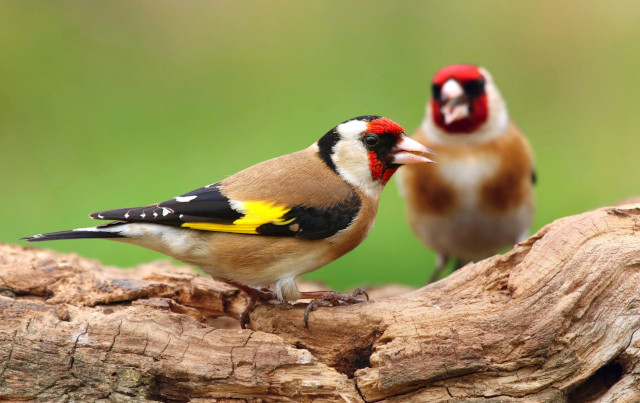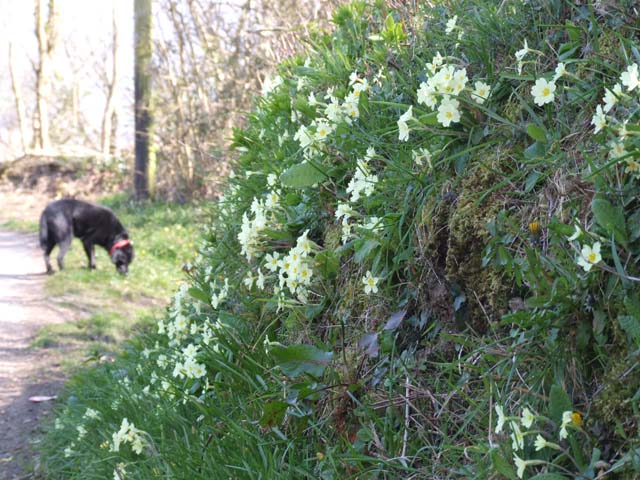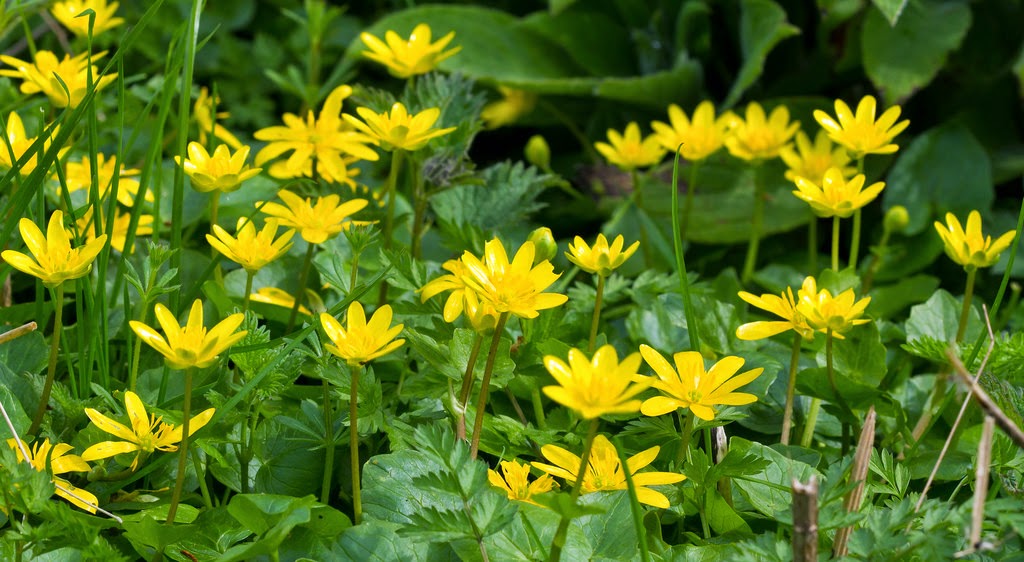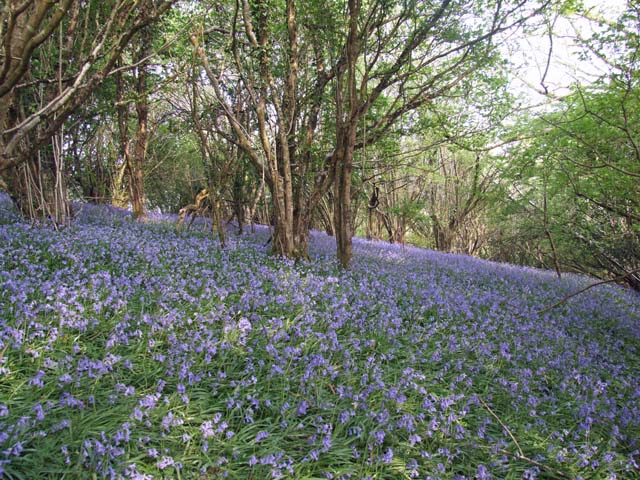I only realized today what celandines are for. Now, primroses I get. They’re the traditional harbingers of spring, their soft lemon yellow in a bed of pale green velvet leaves announcing fresh growth in the watery March sunlight. They cover banks in the woods and in numerous folk-songs, and contrast with the spectrally complementary dog-violets that are scattered amongst them. But celandines, glossy and chrome yellow, always seem just a bit too yellow, like the paint on warning signs rather than a dose of spring.
But today, first thing, the sun was not in the least watery, but almost summery in brightness, and if the primroses were still saying, “Winter is over – life is back,” the river of celandines on the verge of the lane blazed back in response to the sun, “This is what’s coming soon!”
I make no excuse for re-enchanting nature with divine meaning for mankind, partly because it’s a big part of how we were created to respond to nature, hence the folk-songs, and partly because getting out in it is a welcome relief from the wall-to-wall obsession with COVID in the media. (Today’s wall-to-wall obsession with the death of the Duke of Edinburgh is not much better: the Queen succeeded to the throne the very the week I was born, so Prince Philip has always been part of my life. But today’s media know no moderation, a fact which I am sure he hated).
In any case, a fair amount of outside work has been essential, as over the winter I’ve cleared around 200 metres of our Devon bank boundary of brambles and excess tree-growth. I didn’t clear the dog mercury, which is an index plant for ancient woodland and shows our banks have been wooded since at least 1600. And I have just started sawing up an ash tree that fell in the adjacent wood (where the bluebells will soon show – see photo below from last year) without our noticing, for firewood. We didn’t even notice the other trunk that fell on our land, which would have landed in the chicken run if the other trees weren’t still holding it up. It gets stormy up here in winter.
As for natural phenomena, apart from the odd sonic boom from meteors, because of the landscaping work I have been outside to see all the birds re-emerging into public view in their breeding plumage, and to hear their territorial music-making. In particular we have acquired a pair of goldfinches, far prettier than the sad US imitation, studiously ignoring the Nigella-seed feeder we provided for them and grubbing on the ground for ordinary seed spilled by the five species of tits using the other feeder.

A fine cock pheasant arrived on our patch, soon to be joined by a presumably nubile, if cryptically feathered, hen. Sadly, after an encounter with another pheasant, or maybe a fox, he developed a serious limp, and was ousted by another cock, who parades around with two wives. “Limpy” now appears to be mending, so we’ll see how the soap-opera develops.
Once more our swallows have returned, a day apart. It’s not clear whether they are re-using the nests in the stable, but in any case it was good to see them arrive safely back from Africa. My visiting daughter remembered that “One swallow does not a summer make,” but now we have two, and plenty of celandines, which perhaps shifts the odds. Whilst she was here, we even spotted a new pair of raptors stooping above our meadow: they were probably sparrowhawks, but may have been rare goshawks. That’s another one for which to keep a good lookout, adding to our usual count of buzzards, kestrels, peregrines, hobbies and the occasional red kite on holiday.
On the mammal front, several roe-deer are now treating the meadow as home. A quick survey today showed that some spotted bee-orchids have begun to emerge from the earth, so the deer aren’t grazing the field to oblivion, and the more the merrier. Let’s hope the orchids do better this year – the dry spring did them no good in 2020.
Other people have house-mice in their lofts to gnaw the wiring and nest in the rucksacks. The traps in our roof have caught wood-mice, bank voles and even shrews, but nary a proper house mouse. We think the long-eared bat which roosted there, or its offspring, has decamped to the stable, ignoring the bat-box we put up under the eaves. Likewise the sparrows and our sparrow-box: we’ve not even seen a sparrow this year. Wildlife round here is stubbornly uncooperative: even our owl box has been ignored by the tawny owls and squatted instead by stock-doves. At least the robin-box has a good nest – unless that was made by blue-tits, like last year.
Maybe I should attribute that independent spirit to our 600 foot altitude. Even for us humans, it’s relatively easy here to do our own thing. We can ignore talk of vaccine passports and social distancing: we could have thirty people staying here and nobody would know, and I doubt seriously that anyone would tell. In relation to that sense of being the independent “fools on the hill,” in closing I just can’t resist mentioning that we recently took cliff-top walk along Beer Head, eight miles away. A wonderful, wild spot:

We realised we could actually see our place from there. But fortunately not the thirty illegal house-guests.




